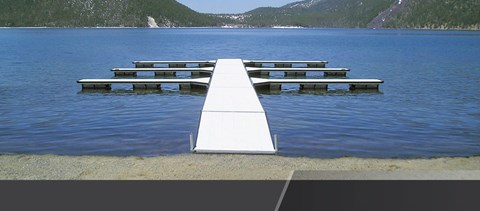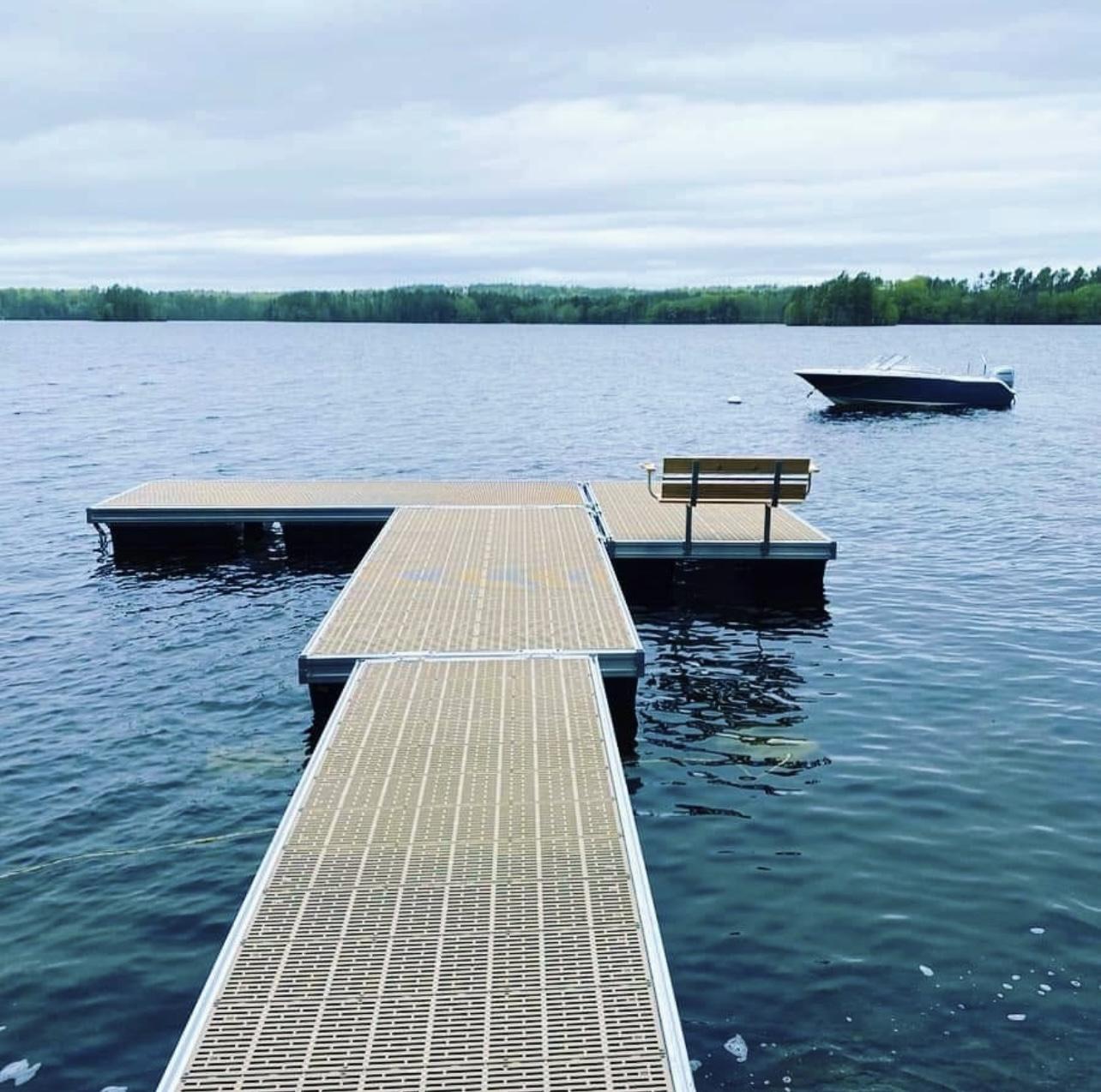Crafting Customized Solutions: Why a Floating Dock Builder is Essential for Distinct Demands
Crafting Customized Solutions: Why a Floating Dock Builder is Essential for Distinct Demands
Blog Article
Create the Perfect Docking Option With Floating Docks
Floating docks present a functional service for a selection of maritime needs, adjusting effortlessly to varying water levels and varied vessel kinds. Their modular nature permits fast installation and moving, yet the selection of proper products and style attributes is essential for making sure both performance and visual appeal. As we discover the important components that contribute to the performance of floating docks, a number of vital variables regarding stability and upkeep will certainly emerge, raising inquiries concerning how to enhance your docking experience. The subsequent conversation will certainly brighten these essential factors to consider.

Advantages of Floating Docks
Floating docks offer various advantages that make them a perfect option for various maritime applications. Among the main benefits is their adaptability to transforming water levels. Unlike dealt with docks, floating docks increase and autumn with the tide, making sure regular availability for vessels. This function is especially crucial in areas prone to considerable tidal variations or seasonal water level changes.
In addition, floating docks are generally simpler and quicker to mount compared to typical fixed frameworks. Their modular style permits for simple setting up and disassembly, helping with upkeep and moving when required. This adaptability is especially advantageous for momentary applications or in settings where conditions may alter.
Floating docks additionally tend to be a lot more environmentally friendly, as they decrease disruption to the seabed and bordering water environments. Their buoyant nature decreases the danger of damage to aquatic life, advertising a much healthier setting. These docks can be tailored to accommodate numerous vessel sizes, making sure that they fulfill particular functional requirements.
Ultimately, the mix of adaptability, simplicity of setup, and ecological factors to consider makes floating docks a highly effective solution for a vast array of maritime requirements.
Selecting the Right Materials
Picking the appropriate materials for floating docks is important to ensure sturdiness, security, and durability. The selection of materials straight affects the dock's efficiency in numerous ecological problems, including direct exposure to water, sunlight, and possible wear from marine website traffic.
Typical products used for floating docks consist of light weight aluminum, timber, and high-density polyethylene (HDPE) Aluminum is light-weight, corrosion-resistant, and needs marginal upkeep, making it an exceptional option for long life. Its preliminary price can be greater compared to other materials.
Wood, while cosmetically appealing and providing a standard look, can be at risk to rot and pest damage otherwise appropriately treated. For that reason, utilizing pressure-treated wood or naturally durable types like cedar or redwood can alleviate these problems.
HDPE is a popular option as a result of its resistance to UV rays and chemicals, in addition to being eco-friendly. floating dock builder. It is readily available and light-weight in numerous shades, enabling for modification
Eventually, the best product choice will certainly depend on specific needs, including budget plan, wanted aesthetic appeals, and go to this web-site environmental considerations. Cautious evaluation of these aspects will cause a successful and durable floating dock solution.
Design Considerations for Stability
When making floating docks, making sure security is an essential element that can considerably influence their functionality and safety and security. Stability in floating dock design is affected by different aspects, consisting of buoyancy, weight circulation, and the setup of elements.
Weight distribution is vital; evenly distributing loads throughout the dock stops turning and enhances stability. This can be accomplished through calculated positioning of docking tools, such as cleats and fenders, in addition to proper spacing of drifts. Additionally, the measurements of the dock should be attentively prepared. Bigger designs can provide raised stability, particularly in harsh water problems, while longer docks might call for extra assistances to avoid sagging.
Another key factor to consider is the environmental impact, consisting of wave action and wind. Including functions such as sidewalls or skirting can assist alleviate the results of ecological pressures, keeping security in negative problems. Ultimately, a mix of thoughtful design, material selection, and understanding of environmental elements will generate a drifting dock that fulfills both security and safety and security needs.
Installation Tips and Methods

Following, secure the necessary permits and stick to local regulations, which might dictate setup methods and environmental factors to consider. If required, engage a qualified specialist experienced in floating dock installations. Use top quality products designed for marine atmospheres to boost durability and durability.
When placing the dock, straighten it alongside the shoreline to promote easy accessibility. Ensure that the anchoring system is durable, using concrete blocks or helical supports to stabilize the dock versus wind and wave activity. It's important to account for seasonal water level variations, consisting of prospective ice movement in colder climates.
Throughout the setup, verify the dock's floatation and security prior to completing the anchoring. On a regular basis examine the setup for any type of indications of wear or damage. By following these suggestions and strategies, you can attain a protected, functional, and visually pleasing floating dock installment that fulfills your requirements.
Upkeep and Treatment Standards
Preserving and caring for floating docks is vital to prolonging their lifespan and making certain secure usage. Routine assessments need to be carried out to determine any type of indications of wear, damage, or marine growth. Seek splits, loosened installations, or stained locations on the dock's surface, as these issues can endanger architectural honesty.
Cleansing is essential. Utilize a pressure washer to eliminate algae, barnacles, and check that particles, which can accumulate with time. For stubborn development, think about environmentally friendly cleaning representatives that won't damage marine life.
Furthermore, check the mooring lines and supports often to ensure they are free and protected from rust. Change any frayed or harmed lines immediately to maintain stability.
During extreme weather condition, such as tornados or freezing problems, take preventive procedures. Protect the dock with additional mooring lines and, if practical, eliminate any detachable parts to prevent damage.
Conclusion
In verdict, the execution of floating docks offers a flexible and effective docking solution ideal for numerous maritime applications. With correct installment and routine upkeep, floating docks can offer reliable and dependable docking experiences for a broad variety of vessels.
As we check out the crucial aspects that contribute to the performance of floating docks, numerous key aspects regarding stability and upkeep will emerge, increasing inquiries regarding how to optimize your docking experience. Unlike fixed docks, floating docks increase and loss with the tide, guaranteeing constant ease of access for vessels.When designing floating docks, guaranteeing security is a basic element that can significantly impact their capability and security. Security in floating dock design is affected by different elements, consisting of buoyancy, weight circulation, and the plan of elements. Eventually, a combination of thoughtful design, product option, and understanding of ecological elements will generate a floating dock that fulfills both security and safety and security requirements.
Report this page